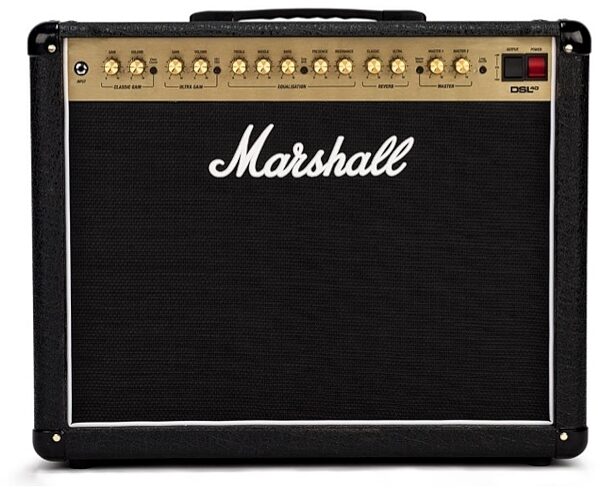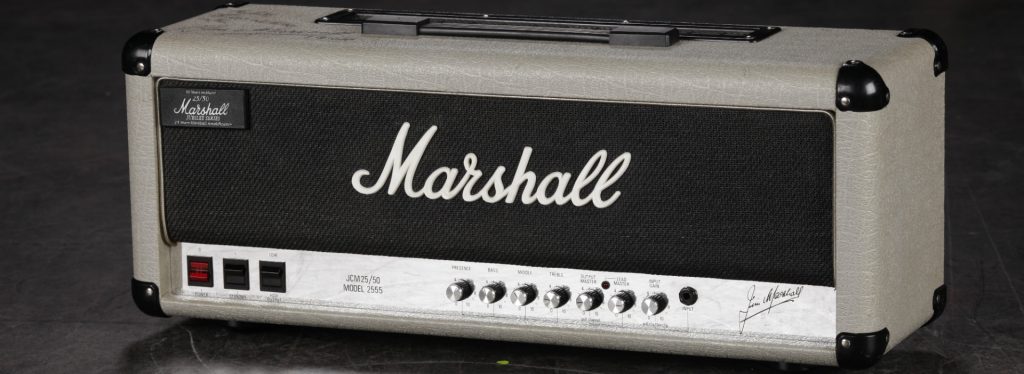If you’re shopping for an amp and considering a Marshall you may be wondering what the differences in various Marshall models are.
There is a wide range of Marshall’s available, catering to the needs of any guitarist. From small combo amps that scream at low volumes, to full stacks that can rock a stadium. And they all have that Marshall crunch.
So how do you choose a Marshall amp?
It starts with knowing what sound you’re personally after.
Are you hobbyist who only wants to play along to tunes in your house?
Are you in a band that covers a wide range of styles and needs the ultimate in flexibility?
Are you a tone purist and demand only the most organic sounds out of your amp?
Which Marshall Amp is the Best?
To find out which Marshall is the best amplifier for you, you need to first start with answering the questions above.
If you need something to practice with in your house, something that can do great cleans and searing distortion and do those tones well at low volumes then you may consider the DSL line. The DSL40CR or DSL20CR fit the bill for this situation.
If you’re a gigging guitarist that needs extreme amounts of distortion, and multichannel flexibility then you might look into the JVM series (an acronym for Jim and his Daughter Victoria Marshall) . They have the most gain on tap of all of Marshall’s lineup, and are foot-switchable up to 4 channels (much like the DSL, just louder).
With artists like Joe Satriani, John 5 and Dave Mustaine playing these playing amps you know that they’re going to rock.
The JVM 410’s four channels include a Clean channel, Crunch Channel, OD1 channel and when you really need to annihilate things, an OD2 channel.
From Marshall’s website:
“Unlike almost every Marshall amp up to this point, for the JVM’s clean channel the gain is added after the tonestack. On the Green setting the volume control is removed from the circuit just like on vintage Marshall amps and provides bright, chimey, clean tones. The Orange setting adds the volume control back in to the circuit along with an additional gain stage post EQ, where as the Red setting also adds another gain stage after the tonestack providing more potential to overdrive the amp.”
If you’re a tone purist that wants the most organic, natural sounding amp that you can find then you’ll want to look at the Origin, Silver Jubilee or the JCM800
The Marshall Origin 50 is an all tube 50 watt combo amp that was designed to generate classic tones. It has a rich tonal characteristic that takes pedals well. Like the Silver Jubilee and JCM800 it can be brought up to modern gain sounds with your overdrive and distortion pedals, allowing you to build up your sound from rock’s most classic bedrock of tone.
If you’re looking for that classic Marshall sound with a little more gain on tap, then you might consider the Marshall Silver Jubilee 2555x.
The Silver Jubilee came about in response to people wanting to modify their JCM800s so that they had more gain available. The Silver Jubilee gives players more gain stages than the classic JCM800s, and two channels in comparison to the JCM800s single channel so that you can dial in both a clean and distorted sound from your amp.
You can read more about the Silver Jubilee in our review of the amp here.
Finally, if you’re looking for pure rock fury goodness, and playing at high volumes is no issue for you, then the JCM800 is the amp you need.
The Marshall JCM800 IS the sound of rock and roll. It’s been on countless albums and stages across the world.
Known for it’s aggressive, open sounding, uncompressed tone, it’s a solid (and very loud) amp platform to build your tone on.
Listen to this video to hear the difference between a Silver Jubilee and a JCM800:
Conclusion
No matter what type of sound or venue you’re looking for, Marshall has a great amp for you. From classic crunch to modern high gain, bedroom volume to arenas, Marshall is the sound of rock and roll and if you’re considering buying one they have one that will fit your needs.




